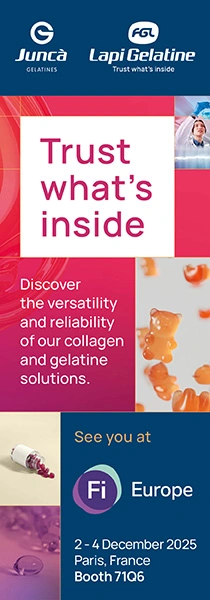Nanotechnology in Food: Numerous Knowledge Gaps Existing
26 May 2014 --- The use of nanotechnology in food is heavily controversial: While the industry is interested in improving specific features of its products (such as the durability of food), critics warn against possible health damages.
The question whether the new nano-food is critical or not was taken up by Akademie Fresenius in terms of its first conference ever focusing on "Nanotechnology in Food". The event which took place from 19 to 20 May 2014 in Mainz (near Frankfurt/Germany) presented the current state of research.
Nanoparticles can reach the human body via inhalation, skin contact or ingestion. Persons who can come into contact with the particles at their workplace are considered to be particularly vulnerable. The exposure route of inhalation is relatively well researched: Depending on their size, nanoparticles can deposit in the respiratory tract and may enter the blood stream which enables them to reach other organs too. In this way, certain (not all!) nanoparticles were in the position to induce diseases like cardiovascular dysfunction, pulmonary fibrosis or even cancer, Kristen M.

Kulinowski (IDA-Science and Technology Police Institute, USA) explained within the frame of her presentation in the area of "medical issues and consumer safety". Following the inhalation, an unintentional ingestion of nanoparticles was possible, the expert continued. Poor work practices such as eating or smoking in the work area would facilitate a transfer from the hands into the mouth. Ingested particles - the consumption of nano-food also falling in this range - could thereby likewise deposit themselves in different organs, Kulinowski emphasized. However, this virtue would depend on a particles' ability to translocate within the human body. Among the already proven effects of nanoparticles were, for example, genotoxic changes in the liver and lungs as well as a cytotoxic impact on human intestinal cells. In respect of dermal exposure, for which not much data was available, similar impacts had been observed.
Various nanoparticles showed effects on cell morphology, damaged the cell membrane or induced DNA damage, the expert listed. Kulinowski summed up that knowledge and appropriate methods in terms of nanoparticles were still lacking. There was a need of data regarding the production and consumption of nanoparticles as well as of methods for exposure assessment and a reliable measurement of the particles in food matrices and biosytems. In addition, one could describe the current data on the absorption, distribution, excretion and metabolism of nanoparticles only as limited.
Martin A. Philbert (University of Michigan, School of Public Health, USA) also emphasized the currently existing shortcomings in relation to the research of nanoparticles. An accurate, quantitative method for the measurement of particles in complex systems (such as food) was virtually absent, the expert stated. Along with it, numerous important information concerning the properties and effects of the particles were not known as well. Among them aspects such as the long-term stability of nano-enabled food supplements or the subacute and chronic interactions between nanomaterials and all of the elements of the differentiated immune system. Even the dosimetry of nanomaterials was not entirely clear, but would make progress. Philbert pointed out that it was of peculiar high relevance to determine the impact of the materials on the gastro-intestinal tract and human nutrition.
Not only processed food can be affected by nanoparticles: crop plants do also come into contact with them. Géraldine Sarret (National Center for Scientific Research, CNRS, France) dealt at the conference with the uptake of nanoparticles into plants and the consequential implications on food and soil quality. Crop plants encountered nanoparticles via the application of sewage sludge, plant protection products and the deposition of atmospheric particles, Sarret outlined. Physical techniques using electrons, X-rays and particles were particularly adequate to locate metals and track chemical transformations at the micrometer scales. A study on silver (Ag) and titanium dioxide (TiO2) nanoparticles had shown that there was a distinct uptake of nano and microparticles. There was both a foliar and a root transfer evidenced. However, no signs of phytotoxicity were observed, Sarret emphasized. It would be very difficult to predict the ingested amount of nanoparticles from afflicted plants for consumers. But probably it would be low in comparison to the amount of nanomaterials included in processed food and packing, Sarret put on record. She added that nanoparticles could have impacts on soil microbial activity and communities, so that impacts on its quality and fertility could be possible and needed to be evaluated.
Apart from the intended use of nanotechnology and the intake of particles as a side effect, there is a third component in the context of nanomaterials and food:
the natural occurrence. Michael E. Knowles (FoodDrinkEurope) clarified that nanoparticles are a traditional constituent of food (e.g. protein nano structures). Thus humans had always been exposed to nanometer scale particles, Knowles explained. On top of that, nanoparticles would also occur naturally from processing techniques such as milling. For that reason, one could not claim that nanoparticles were per se hazardous or that their size implied a specific risk. Notwithstanding, the topic was paramount for the industry. Knowles remarked that an adequate safety assessment was always indicated in cases where the use of nanotechnology changed existing products or processes.
Terminating, Ralf Greiner (Max-Rubner-Institut, MRI, Germany) presented some facts regarding the current market situation for nanomaterials destined for the food area at the conference. In 2006, up to 400 companies worldwide had actively worked on the research and development of nanomaterials for the food sector, Greiner told the audience. For the upcoming year, a rise to more than 1000 companies was assumed. In addition also a rapid market growth for corresponding products was expected within the next years. However, there was still reservation on the European market - virtually all known nano- applications in food and food packaging would come out of the USA, Australia, New Zealand, South Korea, Taiwan, China or Israel, the expert stated. Many applications were currently under development or almost market-ready.
Nevertheless, for the moment, there was as good as no data available regarding the benefits, improvements and risks of the use of nanomaterials in food. Even the economic competitiveness of the nano products was practically unknown, Greiner finished.












